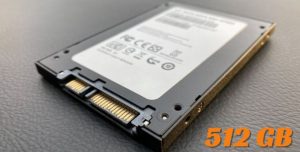The typical home computer uses 10 to 100 watts of power, which can cost you between $10 and $100 per year depending on your electricity rates and the size of your home. A simple search online will show you how many solar panels it would take to power your computer using these numbers, but it’s probably not the amount you were expecting. If you’re interested in going solar with your computer, read on to find out how many solar panels would be needed to keep it powered up for less than what you’re currently paying in electricity bills!
Background and Definitions
If you are wondering how many solar panels you would need to power your computer, you are not alone. More and more people are becoming interested in using renewable energy sources as opposed to using traditional forms of electricity. Having both options available is important. Let’s take a look at what an average computer user uses daily and then see how much power we need for our computers on average and if solar panels can provide that amount of power. A laptop computer usually has around 60 watts per hour usage while desktops use between 200-300 watts per hour. An LCD monitor will use around 100 watts per hour while other electronic devices like printers, speakers, and phones can range from 50-100 watts per hour each.
Most homes have a mix of electronics ranging from 150-400 watts per hour which adds up quickly. The great thing about solar power is that you don’t have to give up all your modern conveniences like laptops or smartphones when switching over to solar power! We recommend keeping some electronics running off regular electricity while also supplementing with some smaller appliances like lamps or fans powered by solar energy so you don’t feel too disconnected from technology!
Estimating the demand of electricity
First, check your computer’s annual energy usage. We often overlook appliance electricity consumption, but computers use a lot. According to MIT, each American desktop consumes power like three refrigerators! Laptops are used even more. Find consumption info in your product manual or online. If you have multiple computers (or a home office), multiply their annual power use by 1.3, adding 0.3 per computer due to more home usage. This estimates the solar panels needed for your computers. Next, determine the required solar panel efficiency rating.
We express efficiency as a percentage, so 100% efficiency means that all the sunlight hitting those solar panels will convert into electricity. For example, if you were going to buy 200-watt solar panels with 90% efficiency, then you’d have the following calculations:
200 watts x 0.9 = 180 watts x 0.9 = 162 watts x 0.9 = 145 watts.
With 200-watt solar panels and 90% efficiency, you’ll produce 145 watts for every 1000 watts of sunlight, resulting in roughly 16 kilowatts per day in full sunlight. Multiply by 30 days for 450 kilowatts. Multiply by 12 months for 5400 kilowatts yearly. Now, take your computer’s power and divide it by 5400 kilowatts yearly to estimate the solar panels needed. For instance, if your computer consumes 500 watts per hour, then 500 / 5400 = .009 hours/day or 9 minutes/day. In other words, 9 minutes of full sunlight would power your computer on a typical sunny Texas summer day with 200-watt solar panels, 90% efficiency, and no other devices running.
After figuring out how many solar panels you’ll need, go online and start comparing prices for different sources of energy. As you might imagine, prices vary widely depending on where you live and whether or not you’re willing to put down a deposit before purchasing your system. Prices also vary depending on whether or not you want professional installation services provided for free or if you’re comfortable doing it yourself. Finally, remember that there are incentives available from both state and federal governments which could reduce costs further based on your location. Because price changes daily, I’m providing a snapshot of costs today based on installing 200-watt solar panels with 90% efficiency in Dallas/Fort Worth, TX.
Calculate the Total Demand considering peak hours
The greatest consideration in deciding the quantity of solar panels expected to drive your PC is your power interest during top hours. For the vast majority, there are times when you require greater power. For example, on the off chance that everybody in your home uses laptops at the same time or somebody utilizes a hair straightener after supper, it influences your power interest.
An overall principle of thumb is that families utilize 2000-3000 kilowatt hours out of each month. With these best guesses (expecting no PC utilization), it would take around 55 sun-powered chargers to every year give sufficient energy to an ordinary American family. Nonetheless, you can significantly reduce this number by precisely calculating your PC’s daily power consumption. Take into account its intermittent use, assuming you avoid using it on weekends and holidays.
Individuals don’t utilize laptops continually, and each time you plug them in, they consume some power. If you utilize a laptop for 8 hours every day, that is 8 kWh day to day (possibly more). Accepting no end-of-the-week or occasion use, it adds up to 16 kWh more than 28 days.
Effect of PV System on Estimation
There are many different types of PV systems, but generally speaking, they fall into one of two categories: grid-tied and off-grid. To understand how many solar panels you’ll need for your computer, you’ll first need to determine which type of system you want. Grid-tied systems can be further broken down into utility intertie and stand-alone grid-tied systems. Utility intertie systems operate within their utility’s billing structure while stand-alone systems sell excess electricity back to their utility company or directly to homes and businesses around them.
You can also use stand-alone systems along with batteries to create an off-grid system. This system stores power during peak production hours.t then utilizes this stored energy at night. Off-grid systems typically require more panels compared to on-grid systems. This is because they lack access to backup power from utilities when sunlight is insufficient.
The precise number of solar panels needed depends on your chosen system and location. Solar energy is most abundant in summer. However, assuming a 5 kW system, our calculations suggest you would require approximately 18 – 20 solar panels. This is to power a computer in an average winter location.
Estimated solar panels to fulfill the electricity demands of a house
The average home in America uses about 10,800 kWh of electricity per year. With that being said, your solar panels will ideally produce enough electricity every year. This should cover all of your yearly energy needs. Calculate how many panels you’ll need by multiplying your yearly electrical consumption (in kilowatt-hours) by 30. If you can’t get an exact number, just guess how much power you use per day and multiply that number by 365 days. For example, if your household uses 5kWh/day, then you’ll need 1,825kWh of energy per year. 30 multiplied by 1,825 equals 507.5 solar panels would be needed to power one house using only solar energy!
Compare Pricing for Off-Grid Versus Grid-Tied Systems
When deciding on off-grid or grid-tied solar panels, consider the cost. Setting up off-grid systems isn’t as expensive as you think. In some areas, it may cost about $1,000. You’d need around 250 panels, generating 5,000 watts. These systems offer steady energy, not quick fixes. Without batteries, they only work in sunlight. Cloudy days mean no electricity.
For night-time use, off-grid systems require a backup plan, like storing power in batteries. Solar cells lose efficiency over time, becoming unreliable after around twenty years. While initially cheaper than grid-tied systems, off-grid ones have shorter lifespans and need more maintenance.
Estimating energy consumed for the lifetime
New solar panels are pretty cheap; you can buy 10 times as many for $1,000 as you could 20 years ago. However, they aren’t free and eventually, they need to be maintained. How much would that cost over a decade or two of use? To determine the lifetime electricity generation of your solar-powered computer, multiply its daily energy requirements. Do this calculation for 365 days per year. You can get an idea of how much energy your device uses with an app like Kill A Watt.
For instance, if your computer uses 200 watts on standby and 1 watts when off, it’s 201 watts daily. Multiply by 365 days annually: 201 x 365 = 73050. Then divide by 1 kilowatt hour (3.6 megajoules) to find daily power use: 73050 / 3.6 = 2282 kWh/day. Multiply by 30 years (typical solar panel lifespan) to know the computer’s lifetime energy consumption: 2282 kWh/day x 30 years = 627180 kWh total.
Estimate Battery Replacement Costs, if Needed
If you want your computer to operate off of solar power, it means you will need some battery storage. Most computers have one or two rechargeable batteries. They can last anywhere from three hours (with heavy use) to more than ten hours on light loads. When considering solar panels, make sure you have sufficient panels and battery capacity. This ensures your computer can run on stored power during cloudy days with limited sunlight.
To determine your required solar panels, first, assess your batteries’ endurance with various loads. Calculate your computer’s daily watt usage. Then, add 50% for battery wear over time. Remember, using stored energy depletes batteries. Computers are durable; their batteries weaken with age. Thus, we advise a 50% increase in your panel estimate.
Read also: Are MSI laptops good?








